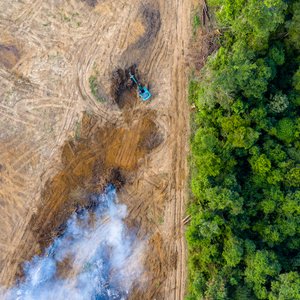More farms – more disease?
Text by Irene Andreassen. Photo by Frank Gregersen, Fiskeriforskning.
New farmed species are heading full speed ahead into the Norwegian aquaculture industry. More farms are making it cramped for space along the coast, and this is increasing the danger for spreading disease amongst the different fish species.
A lack of space along the coast is a problem as farming of more marine species starts up, and the distance between the different farms will be shorter.
Spreading of bacterial and viral diseases amongst the farms via the water will therefore be possible. In collaboration with the Norwegian College of Fishery Science, Fiskeriforskning has now tested the possibility of spreading of disease amongst salmon, cod and halibut.
Diseases in new farmed species
"We still do not know much about which diseases the new farmed species can catch. But we do know that several known bacteria and viruses can cause disease in many different fish species", says Senior Scientist Vera Lund.
"We have now studied this in a tank system especially designed for these studies at Tromsø Aquaculture Research Station. Here, we can inflict a bacterial or viral disease on one type of fish in a central tank. From this tank, different quantities of infected waste water can be transferred to tanks with other species to see whether these are susceptible to the disease", explains the scientist.
Salmon, cod and halibut
The system has been tested by transmitting classical vibriosis from salmon to cod. Forty to sixty percent mortality has been registered in the tanks with cod, depending on how much infected water was transferred.
"Atypical furunculosis is a problem in halibut farming and an increasing problem in cod farms. Our tests showed that waste water from a tank with halibut with atypical furunculosis transmitted the disease to cod in neighbouring tanks. The cod had a more chronic form of the disease than that which we have observed with other challenge models."
"Since neither cod nor halibut are vaccinated against atypical furunculosis, it is also possible that cod can infect halibut in a nearby farm. In addition, we do not know for certain whether salmon that are vaccinated against typical furunculosis are protected against all variants of the atypical furunculosis bacteria that are found in the environment."
Preventive measures
It is important to develop effective vaccines for new farmed species before the disease problems become too serious. The challenge model proves the possibility for spreading, but does not say anything about the distances the disease can be spread.
The project is financed by Innovation Norway and is a collaboration between the NorwegianCollege of Fishery Science and Fiskeriforskning.
Would you like more information about the subject?
Contact Senior Scientist Vera Lund or Scientist Helene Mikkelsen







